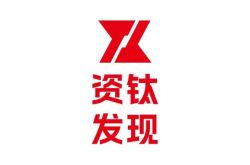Final Verdict: The Low Pricing of New Cars Represents a Form of 'Involution' and is Harmful to the Automotive Industry's Progress
![]() 11/14 2025
11/14 2025
![]() 376
376
Thanks to the high level of attention from central leaders and the collaborative efforts of government departments, industry associations, and automotive companies, the rampant 'involutionary' and cutthroat competition that plagued the automotive industry over the past two years has seen some relief. The price war, which mainly revolved around low-price competition, has been superficially contained under immense pressure. Currently, no automaker dares to openly engage in price wars. However, while overt automotive price wars may have subsided, covert ones persist.
On October 30th, Chery unveiled its flagship six-seater SUV, the Fengyun T11, at a global new car launch event in Beijing, with limited-time trade-in prices ranging from 179,900 to 239,900 yuan.
Following the event, numerous media outlets privately messaged Li Xueyong, Executive Vice President of Chery Automobile, praising the Fengyun T11 for its features typically found in vehicles priced at least 400,000 to 500,000 yuan, deeming the price incredibly cost-effective.
Yin Tongyue, the head of Chery Automobile, remarked at the launch event that pricing new cars is a challenging task. Setting prices too high makes them difficult to sell, while pricing them too low yields no profit. He believes that the low pricing of new cars is also a form of 'involution,' expressing a sense of helplessness in his comments. When asked whether the Fengyun T11 could be profitable at such a low price, Yin responded with a bitter smile, saying, 'How can we make money? We're selling at a loss.'
In today's fiercely competitive domestic automotive market, the pricing strategy for new car launches has become a focal point for major automakers. Many new cars are introduced with low pricing strategies. For consumers, low prices mean they can purchase their desired vehicles for less. For automotive manufacturers, low pricing is a necessary tactic to capture market share. However, it is crucial to recognize that there are numerous hidden risks and drawbacks associated with low pricing, which are detrimental to the healthy development of China's automotive industry and market.
A Helpless Choice Amidst Intensifying Market Competition
With the rapid advancement of the automotive industry, the variety of models available in the market has become increasingly diverse, offering consumers more choices. To distinguish themselves from numerous competitors, automakers are employing various strategies. Low pricing, as a direct and effective approach, is being adopted by an increasing number of automakers. When one automaker introduces a new car with a low pricing strategy, others, to maintain their market share, are compelled to follow suit and lower their prices. This competitive landscape has led to confusion in the overall market pricing system, creating a vicious cycle.
In a specific market segment, the prices of several mainstream models were relatively stable, each with a clear market positioning and target customer base. However, when a new model from a certain brand entered the market at an extremely low price, the existing equilibrium was disrupted. Other models, to avoid being marginalized, were forced to lower their prices. While consumers may benefit in the short term, such disorderly competition is highly detrimental to the healthy development of the entire industry in the long run.
Cost Pressure Shift Behind Low Pricing
The low pricing of new car launches, while seemingly advantageous to consumers, often results in automakers shifting part of the cost pressure to suppliers, reducing procurement costs for components, and consequently leading to a decline in vehicle quality.
Some automakers, in an effort to cut costs, opt for lower-priced component suppliers or pressure existing suppliers to lower their prices, thereby compromising the overall quality and reliability of the vehicles. On the other hand, the lack of profit or extremely low profit margins from new car launches with low pricing also impacts automakers' investment in research and development. As R&D is the driving force behind innovation and development in the automotive industry, reduced investment due to low-price competition will impede technological progress across the entire industry.
A certain emerging domestic automotive brand adopted a highly competitive low pricing strategy for its new car launch, quickly attracting a large number of consumers. However, during subsequent use, consumers discovered numerous quality issues with the vehicle, such as shoddy interior workmanship and frequent electronic system failures. It turned out that to control costs, the automaker had significantly compromised on component procurement and manufacturing processes, ultimately leading to a decline in product quality. This resulted in a wave of negative reviews and a sharp drop in sales.
Low Pricing Affects Brand Image and Industry Ecosystem
The low pricing strategy can also tarnish the brand image of automakers. Building a brand requires long-term effort and accumulation, and price is often one of the key indicators of brand value. When an automotive brand frequently resorts to low pricing, consumers may question its brand value, perceiving it as lacking in high-end quality and technological sophistication. This is highly detrimental to the brand's long-term development, leading to a decline in brand loyalty and, consequently, affecting the company's sustainable growth.
The low pricing of new car launches can also disrupt the ecological balance of the entire automotive industry. In a healthy market environment, models from different brands and price ranges should fulfill their respective roles, meeting the needs of diverse consumers. However, the emergence of low pricing has created market confusion, forcing some brands originally focused on the high-end market to participate in price wars. This not only affects their own profitability but also leads to an imbalance in resource allocation across the entire industry.
How to Break Free from the 'Involution' of Low Pricing
Faced with the 'involution' phenomenon of low pricing for new car launches, automotive companies should seek healthier and more sustainable development paths. Firstly, they should prioritize product research and development and innovation, attracting consumers by enhancing the technological content and quality of their products, rather than relying solely on price competition. Only by continuously launching innovative and competitive products can they secure a foothold in the market.
Secondly, automakers should strengthen brand building, establishing a positive brand image and reputation. Brand is one of the core competitivenesses of a company. By providing high-quality products and services, they can enhance consumer satisfaction and loyalty, thereby realizing brand appreciation.
Thirdly, the automotive industry should foster cooperation and communication, jointly formulating reasonable market rules and pricing systems to avoid vicious competition and promote the healthy development of the entire automotive industry.
In conclusion, while the low pricing of new car launches may bring about short-term sales growth, it poses numerous negative impacts on automakers themselves, consumers, and the overall industry's development in the long run. Only by abandoning such short-sighted behavior and embarking on a path of innovative development can the automotive industry achieve a virtuous cycle and embrace a brighter future. (End)







